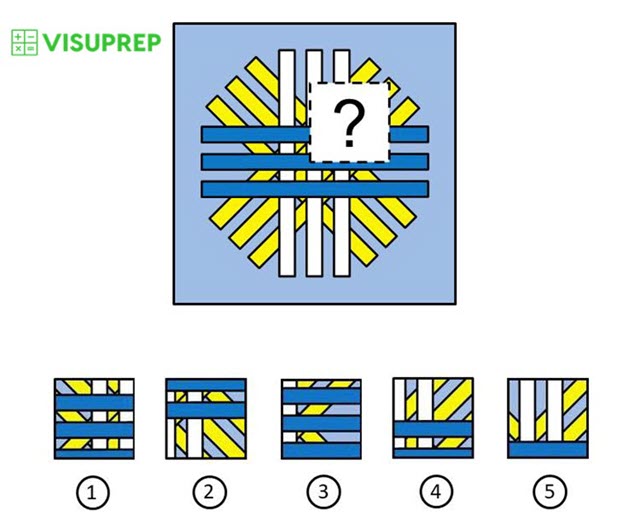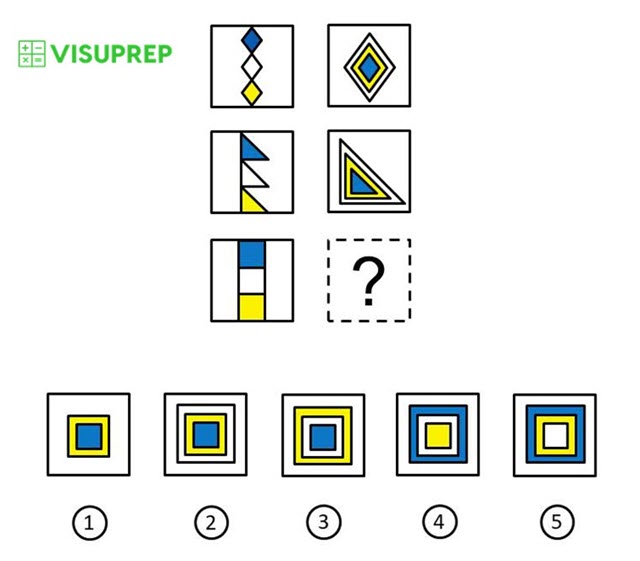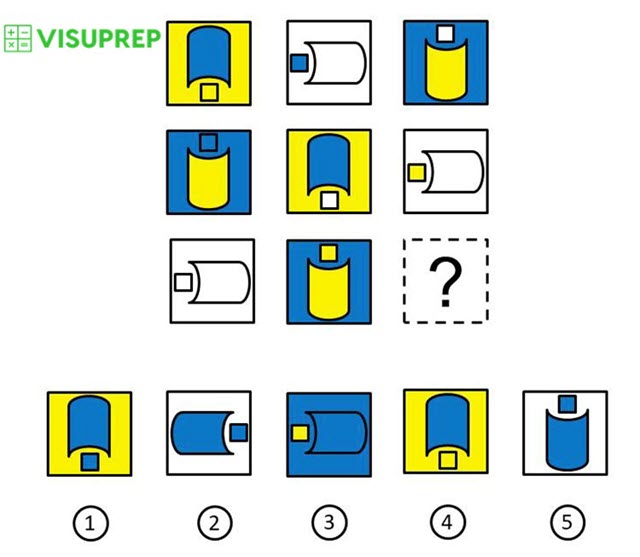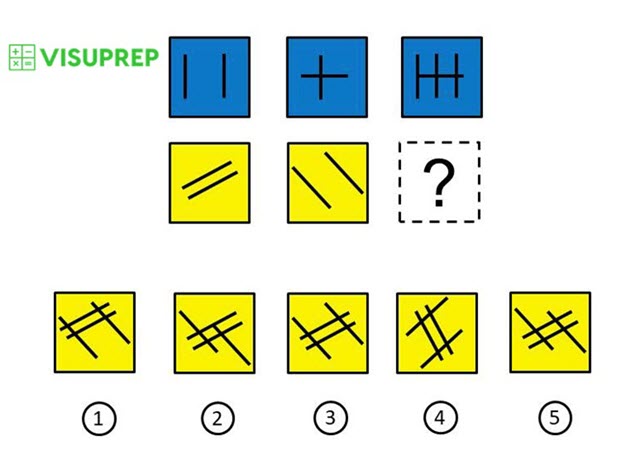NNAT (Naglieri Nonverbal Ability Test) Preparation
Visuprep provides online NNAT2 and NNAT3 test prep software which helps prepare for the NNAT®-2 (second edition) and NNAT3® Level 1 and Level 2 tests published by Pearson Education (which are taken by first and second graders). Each grade 1 and grade 2 NNAT2 and NNAT3 prep test costs $20 for one year’s membership, and contains 48 questions. To help with test preparation and practice for grade 1 and grade 2 NNAT (Naglieri Nonverbal Ability Test) tests, each prep test comes with explanations for (in addition to answers to) the test questions.
Visuprep NNAT2 Level B (Grade 1) Test 1 and NNAT3 Level C (Grade 2) Test 1 & Test 2 are available for purchase now.
Visuprep NNAT2 Level D (Grades 3 & 4) tests are not yet available for purchase. They will probably be available later this year. We have a demo of a Level D (Grades 3 & 4) test further down this page.
Click on the buttons below to see demos and images of the NNAT2 level B grade 1 test and the NNAT3 level C grade 2 prep tests.
Visuprep NNAT2 Level D (Grades 3 & 4) Demo
Note that you can expand (enlarge) the size of the text and images in the NNAT test prep demo software on a mobile or tablet by using pinch-to-zoom. Pinch-to-zoom is when you place your thumb and a finger close together on the screen and move them apart without lifting them from the screen. To reduce the size of the text and images in the NNAT prep test demo software, place your thumb and a finger a little distance apart on the screen and move them toward each other without lifting them from the screen.
Click on the links below to run the demo NNAT prep tests.
The untimed test has answers immediately after each question, the timed test has answers at the end of the test.
A pdf file of the sample questions in the NNAT test prep demo, together with the answers, is available by clicking on the link below:
What is the NNAT®?
The NNAT (Naglieri Nonverbal Ability Test) is a cognitive ability test that is a nonverbal measure of general ability. The test was designed by Jack A. Naglieri, PhD, and is published by Pearson Education. The NNAT tests are often used to identify gifted and talented children for entrance into school accelerated and gifted and talented programs. The NNAT tests are nonverbal tests (requiring minimal use of language and instructions) which make use of abstract shapes and designs, and are therefore a good culturally neutral assessment of general ability.
There are three editions of the test
- NNAT® (first edition)
- NNAT®-2 (second edition)
- NNAT®3 (third edition)
Differences between the NNAT®, NNAT®-2 and NNAT®3
All versions (or editions) of the NNAT are similar in the type of questions they test for i.e. they all test for the following four question types:
- Pattern Completion
- Reasoning by Analogy
- Serial Reasoning
- Spatial Visualization
The NNAT® (first edition) was the earliest NNAT test to be introduced and it contains 38 questions.
The later NNAT®-2 (second edition) and the more recent NNAT®3 (third edition) tests both contain 48 questions and should both be completed in 30 minutes.
The NNAT®-2 and NNAT®3 are quite similar, and NNAT2 test prep material can be used to help prepare for NNAT3 tests.
Pearson’s NNAT3 Manual for Levels A-D states
Although NNAT3 consists of an entirely new set of items, the item typesare the same as on NNAT2, and each level of the NNAT3 and NNAT2 forms havea similar representation of types. Therefore, NNAT3 and NNAT2 are expectedto measure the same construct and to correlate highly with each other.
The items referred to are the questions and the item types are the four question types.
There is a difference between NNAT2 and NNAT3 tests in terms of the colors used to create items (or questions).
Both tests use the four colors black, white, yellow and blue, but for the fifth color, NNAT2 uses another shade of blue whereas NNAT3 uses green.
Visuprep NNAT2 tests use another shade of blue rather than green for the fifth color. However, most questions do not make use of a fifth color (i.e. two shades of blue), so the difference, in terms of color, with NNAT3 tests is minimal.
NNAT Test Question Types and Levels
There are four types of question that can appear in NNAT tests:
- Pattern Completion
- Reasoning by Analogy
- Serial Reasoning
- Spatial Visualization
Information on these question types is shown below:
Pattern Completion problems call for students to recognize the option which will complete the given pattern.
Reasoning by analogy questions contain geometric shapes which have a logical relationship between them. Students need to recognize how the objects change (e.g. in size or color etc) when one moves across rows and/or down columns.
Serial Reasoning questions contain a series of shapes that change in a sequence across rows and down columns. The student needs to identify the next shape in the sequence.
Spatial visualization questions require the student to recognize how two or more designs would look if combined.
There are seven levels of NNAT test, depending on a student’s grade level. The seven levels and their associated grades are shown below:
- Level A (Kindergarten)
- Level B (Grade 1)
- Level C (Grade 2)
- Level D (Grades 3 & 4)
- Level E (Grades 5 & 6)
- Level F (Grades 7, 8 & 9)
- Level G (Grades 10, 11 & 12)
The questions that appear in our NNAT test prep demo software are shown below.

The yellow rectangles must point toward the right, therefore the answer cannot be (1) or (2).
There must be approximately one and a half horizontal dark blue rectangles, so the answer cannot be (3) or (5). Therefore the answer is (4).


The second box in each row contains three similar shapes placed on top of or inside each other. The three shapes are similar to the three shapes shown in the first box of the row. For each row, the color of the innermost shape in the second box is the same as the color of the top shape in the first box, the color of the middle shape in the second box is the same as the color of the bottom shape in the first box and the color of the outer shape in the second box is the same as the color of the middle shape in the first box. Therefore the answer will be the one which has three overlapping squares where the outer square is white, the middle square is yellow and the inner square is blue. Therefore the answer is (2).


Each box has a background color and contains a bullet and a small square. Looking at each row, you can see that the background color of each box is different and must be either yellow, white or blue. Then looking at the third row, you can see that background colors of white and blue have been used (for boxes 1 and 2) and therefore box 3 must have a yellow background. Looking at the five possible answers, the only ones with a yellow background are (1) and (4), therefore the answer must be one of these. Looking at answers (1) and (4), the bullet is the same in both and therefore this must be correct for the bullet, so now look at the small square in answers (1) and (4). The small square in answers (1) and (4) is in the same position (so its position must be correct), but has a different color, so one of these colors is incorrect.
Looking at each row and concentrating on the color of the small square, you can see that its color is different within each box and must be either yellow, white or blue. Then looking at the third row, you can see that the colors of white and yellow have been used for the small square (in boxes 1 and 2) and therefore box 3 must contain a blue small square. Therefore the answer must be (1).


Looking at the first row, the design in the third box is the designs in the first box and the second box combined. Therefore the answer must be the designs in the first box and the second box of the second row combined. The answer cannot be (1) because the two parallel lines pointing to the right are too high up the box i.e. they are too near the top left corner of the box. The answer cannot be (2) because one of the lines is too near the bottom right corner of the box. The answer cannot be (4) because the two parallel lines pointing to the right are too far apart and the two parallel lines pointing to the left are too near to each other. The answer cannot be (5) because the two parallel lines pointing to the left are in different positions to the two lines in row 2 column 2. Therefore the answer is (3).

Naglieri Nonverbal Ability Test®, NNAT®-2 and NNAT®3 are registered trademarks of Pearson Education Inc. or its affiliate(s), or their licensors. Visuteach and its website, visuprep.com, are not affiliated with nor authorized, sponsored or otherwise approved by Pearson Education Inc. or its affiliates.

